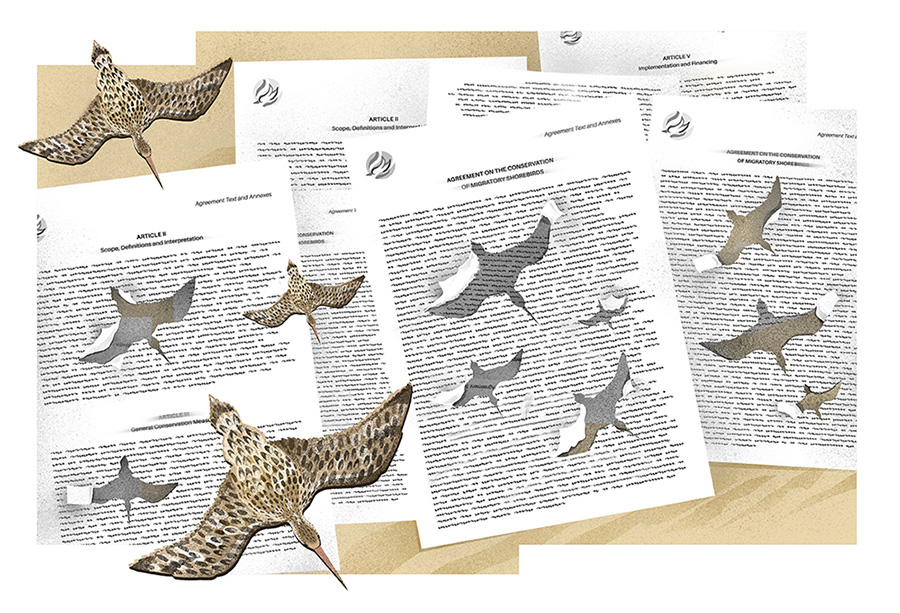As a kid growing up in Mumbai, I often played on the beach. Our football would sometimes disperse a flock of white birds with grey wings sitting by the water. Those birds were brown-headed gulls, winter migrants that are commonly seen around water bodies throughout peninsular India. But they are part of an elite class of only 92 species worldwide (less than one percent of over 10,000 bird species) that show what scientists— Jessie L. Williamson and Christopher C. Witt—call Elevational Niche-Shift Migration (ENSM). ENSM is a special kind of migration where birds not only move seasonally between locations, but also these locations have over 2000 metres (6600 feet) of difference in elevation. Those brown-headed gulls eating chips and gathiya (Indian snacks) that you drop on the beach are doing something incredible every year, flying over the Himalayas to breed on the Tibetan plateau.
Thousands of species of birds spend their summers in their breeding habitats and migrate significant distances to their non-breeding or winter habitats every year. Some species, like the bar-tailed godwit, make epic 12000 km non-stop flights, and even the tiny 4-gram ruby-throated hummingbird flies from Canada to Central America and back every year. But almost all migratory species’ breeding and non-breeding habitats are at low elevations (for example, the Indian pitta). ENSM species, on the other hand, migrate between summer and winter habitats that are very different in elevation and, thus, over 20 percent different in their oxygen availability. Moreover, most spend their summers breeding in the more hypoxic (low oxygen) high elevation habitats where all activities—flying, maintaining body temperature, feeding, avoiding predators— are much more energy intensive than at lower elevations. Talk about high achievers!

After collating information on the migration ecology of thousands of birds, Williamson and Witt discovered that ENSM species are spread out across the avian tree of life. Songbirds (such as finches, warblers, and flycatchers) comprised the biggest single group, but sandpipers, gulls, cranes, pigeons, and hummingbirds are also some species with ENSM movement. Each clade has independently evolved this extreme lifestyle, which is especially concentrated in birds of the Himalayas and Tibetan plateau.
For any oxygen-breathing animal, enduring such a 20 percent change in oxygen availability is quite significant. High elevation organisms (including humans in the Ethiopian highlands, Tibet, and the Andes) have several modifications to their physiology that increase their ability to extract oxygen from the air. These include changes in the breathing pattern, blood circulation, blood chemistry (increased hemoglobin concentration, increased size and number of red blood cells), etc. However, high elevation adaptations come with a cost if you don’t live in a high elevation environment, such as highly viscous blood due to the increased red blood cell counts, making the blood more difficult to circulate. So, having high elevation adaptations in a low elevation environment for many months of the year creates a dangerous animal-environment mismatch.
The scientists suggest two models to explain how ENSM evolved: 1) High elevation habitats may match the winter ranges of these birds in temperature and habitat, or 2) Himalayan birds may also have evolved ENSM as their summer breeding habitats slowly rose up in elevation over millions of years, giving them the time to adapt.
Williamson and Witt argue that ENSM species may achieve these feats of physiology by not having a specialized high elevation or low elevation system, but rather a highly flexible physiology. This would give them the ability to quickly change their body to survive in a new environment, thus helping them cope with these extreme changes twice a year. Given the handful of ENSM species worldwide, it appears though that this physiological flexibility is difficult to evolve and a lot remains to be studied.
So the next time you see a brown-headed gull, grey wagtail, greenish warbler or common sandpiper, know that they may be common birds, but under the hood they are incredible animals!
Further reading:
Williamson, J. L. and C. C. Witt. 2021. Elevational niche-shift migration: Why the degree of elevational change matters for the ecology, evolution, and physiology of migratory birds. Ornithology 138(2): ukaa087.






